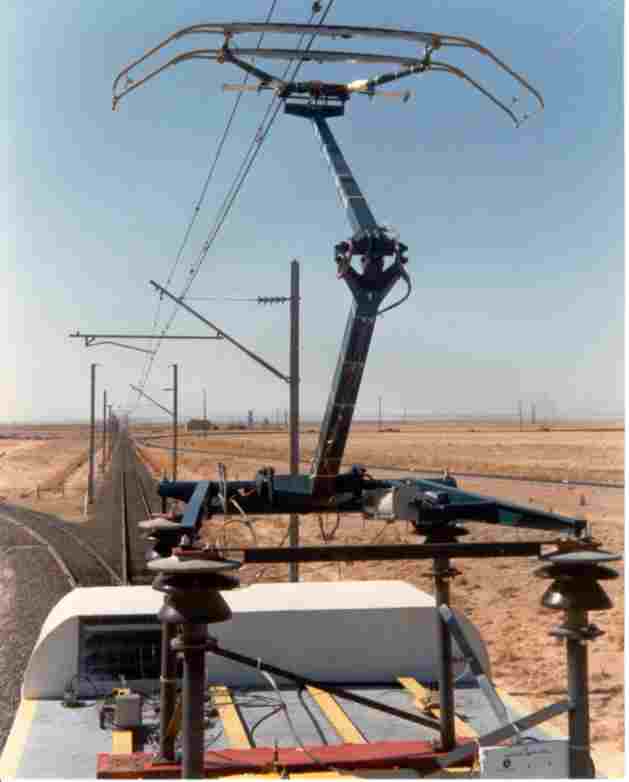For a system that uses pantographs, the wire is called a cantenary. For a system that uses trolleys, the wire is called a trolley wire. (Cantenary wires are held at a constant tension, and are capable of powering trains at much higher speeds than trolley wires, even if the voltage is the same.)
Thank you. That's catenary, I think (also describing the curve made by a chain suspended from two points, similar to but different from an ellipse).
(Dad was a mechanical engineer and railfan, as you may be also ?)
A graphic pantograph is a device of levers and pivots which enables the reproduction of an image on an adjacent surface, either at 1:1 or at a different scale.
Riding the SLUT
I just felt like posting this.
Technically, it can't be called a trolley because it uses a pantograph instead of a trolley pole for its electrical pickup.


Pantograph:
Trolley pole:
LIG
what are you, a fucking park ranger?
And what is the wire called that is contacted by the pantograph or the trolley pole ? And what is the drawing device, also called a pantograph ?
For a system that uses pantographs, the wire is called a cantenary. For a system that uses trolleys, the wire is called a trolley wire. (Cantenary wires are held at a constant tension, and are capable of powering trains at much higher speeds than trolley wires, even if the voltage is the same.)
I have no idea about the drawing device...
DEEZ
Thank you. That's catenary, I think (also describing the curve made by a chain suspended from two points, similar to but different from an ellipse).
(Dad was a mechanical engineer and railfan, as you may be also ?)
A graphic pantograph is a device of levers and pivots which enables the reproduction of an image on an adjacent surface, either at 1:1 or at a different scale.
ride the snake... to the lake...
i'd ride it
Block this user
Are you sure you want to block this user and hide all related comments throughout the site?
Archinect
This is your first comment on Archinect. Your comment will be visible once approved.